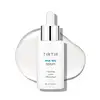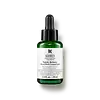What's inside
What's inside
 Key Ingredients
Key Ingredients

 Benefits
Benefits

 Concerns
Concerns

 Ingredients Side-by-side
Ingredients Side-by-side

Water
Skin ConditioningGluconolactone
Skin ConditioningC9-12 Alkane
SolventPropanediol
SolventButylene Glycol
Humectant1,2-Hexanediol
Skin ConditioningTromethamine
BufferingSodium Hydroxide
BufferingSodium Citrate
BufferingCitric Acid
BufferingEthylhexylglycerin
Skin ConditioningVaccinium Myrtillus Fruit Extract
Skin ConditioningAdenosine
Skin ConditioningDisodium EDTA
Saccharum Officinarum Extract
MoisturisingSqualane
EmollientCitrus Aurantium Dulcis Fruit Extract
MaskingCitrus Limon Fruit Extract
MaskingAcer Saccharum Extract
Skin ConditioningDioscorea Japonica Root Extract
Skin ConditioningCorchorus Olitorius Leaf Extract
Skin ConditioningNelumbo Nucifera Root Extract
Skin ConditioningHibiscus Esculentus Fruit Extract
Skin ConditioningAngelica Keiskei Extract
AntioxidantCapryloyl Salicylic Acid
ExfoliatingHippophae Rhamnoides Fruit Oil
Skin ProtectingWater, Gluconolactone, C9-12 Alkane, Propanediol, Butylene Glycol, 1,2-Hexanediol, Tromethamine, Sodium Hydroxide, Sodium Citrate, Citric Acid, Ethylhexylglycerin, Vaccinium Myrtillus Fruit Extract, Adenosine, Disodium EDTA, Saccharum Officinarum Extract, Squalane, Citrus Aurantium Dulcis Fruit Extract, Citrus Limon Fruit Extract, Acer Saccharum Extract, Dioscorea Japonica Root Extract, Corchorus Olitorius Leaf Extract, Nelumbo Nucifera Root Extract, Hibiscus Esculentus Fruit Extract, Angelica Keiskei Extract, Capryloyl Salicylic Acid, Hippophae Rhamnoides Fruit Oil
Water
Skin ConditioningAlcohol Denat.
AntimicrobialHydroxyethylpiperazine Ethane Sulfonic Acid
BufferingHydroxyethyl Urea
HumectantSodium Citrate
BufferingVaccinium Myrtillus Fruit Extract
Skin ConditioningSodium Hydroxide
BufferingChenopodium Quinoa Seed Extract
Skin ConditioningSaccharum Officinarum Extract
MoisturisingGlycerin
HumectantPropanediol
SolventPhytic Acid
Carrageenan
Phenoxyethanol
PreservativeCitrus Aurantium Dulcis Fruit Water
MaskingCitrus Limon Fruit Extract
MaskingDisodium EDTA
Acer Saccharum Extract
Skin ConditioningHydrolyzed Opuntia Ficus-Indica Flower Extract
AbrasivePotassium Sorbate
PreservativeAloe Barbadensis Leaf Juice Powder
Skin ConditioningAdenosine
Skin ConditioningEthylhexylglycerin
Skin ConditioningCitrus Aurantium Dulcis Juice
Skin ConditioningSodium Benzoate
MaskingAscorbyl Glucoside
AntioxidantWater, Alcohol Denat., Hydroxyethylpiperazine Ethane Sulfonic Acid, Hydroxyethyl Urea, Sodium Citrate, Vaccinium Myrtillus Fruit Extract, Sodium Hydroxide, Chenopodium Quinoa Seed Extract, Saccharum Officinarum Extract, Glycerin, Propanediol, Phytic Acid, Carrageenan, Phenoxyethanol, Citrus Aurantium Dulcis Fruit Water, Citrus Limon Fruit Extract, Disodium EDTA, Acer Saccharum Extract, Hydrolyzed Opuntia Ficus-Indica Flower Extract, Potassium Sorbate, Aloe Barbadensis Leaf Juice Powder, Adenosine, Ethylhexylglycerin, Citrus Aurantium Dulcis Juice, Sodium Benzoate, Ascorbyl Glucoside
Ingredients Explained
These ingredients are found in both products.
Ingredients higher up in an ingredient list are typically present in a larger amount.
We don't have a description for Acer Saccharum Extract yet.
Adenosine is in every living organism. It is one of four components in nucleic acids that helps store our DNA.
Adenosine has many benefits when used. These benefits include hydrating the skin, smoothing skin, and reducing wrinkles. Once applied, adenosine increases collagen production. It also helps with improving firmness and tissue repair.
Studies have found adenosine may also help with wound healing.
In skincare products, Adenosine is usually derived from yeast.
Learn more about AdenosineCitrus Limon Fruit Extract comes from lemons. While lemon extract is exfoliating and antimicrobial, it can also cause skin sensitivity.
Lemons contains antioxidants, which may help with anti-aging. They are also rich in citric acid, an AHA.
And of course, lemons are rich in Vitamin C. Vitamin C helps with skin-brightening and increasing collagen production.
The acidity of lemons may work as an astringent for acne.
However, lemons can also cause skin sensitivity due to its limonene content. It can also increase photosensitivity, or sensitivity to the sun.
This ingredient is also used to add a lemon scent to products.
Learn more about Citrus Limon Fruit ExtractDisodium EDTA plays a role in making products more stable by aiding other preservatives.
It is a chelating agent, meaning it neutralizes metal ions that may be found in a product.
Disodium EDTA is a salt of edetic acid and is found to be safe in cosmetic ingredients.
Learn more about Disodium EDTAEthylhexylglycerin (we can't pronounce this either) is commonly used as a preservative and skin softener. It is derived from glyceryl.
You might see Ethylhexylglycerin often paired with other preservatives such as phenoxyethanol. Ethylhexylglycerin has been found to increase the effectiveness of these other preservatives.
Propanediol is an all-star ingredient. It softens, hydrates, and smooths the skin.
It’s often used to:
Propanediol is not likely to cause sensitivity and considered safe to use. It is derived from corn or petroleum with a clear color and no scent.
Learn more about PropanediolThis ingredient is also called sugarcane extract. It is a moisturizing humectant and has skin soothing properties.
Similar to hyaluronic acid, sugarcane can attract moisture to your skin.
Glycolic acid is a derivative of sugarcane. While glycolic acid is an AHA with exfoliating properties, sugarcane is not an AHA.
A study from 2021 found the compounds in sugarcane extract to have antioxidant, antimicrobial, and anti-inflammatory activity. The study also suggests these compounds can inhibit skin ageing enzymes and promote collagen synthesis.
Learn more about Saccharum Officinarum ExtractSodium Citrate is the sodium salts of citric acid. In skincare, it is used to alter pH levels and acts as a preservative.
Its main functions are to maintain the pH of a product and neutralize metal ions.
The acidity of our skin is maintained by our glands and skin biome; normal pH level of skin is slightly acidic (~4.75-5.5).
Being slightly acidic allows our skin to create an "acid mantle". This acid mantle is a thin barrier that protects our skin from bacteria and contaminants.
Learn more about Sodium CitrateSodium Hydroxide is also known as lye or caustic soda. It is used to adjust the pH of products; many ingredients require a specific pH to be effective.
In small amounts, sodium hydroxide is considered safe to use. However, large amounts may cause chemical burns due to its high alkaline.
Your skin has a natural pH and acid mantle. This acid mantle helps prevent harmful bacteria from breaking through. The acid mantle also helps keep your skin hydrated.
"Alkaline" refers to a high pH level. A low pH level would be considered acidic.
Learn more about Sodium HydroxideVaccinium Myrtillus Fruit Extract comes from the bilberry plant. This plant is native to Eurasia.
Bilberry contains antioxidant compounds called anthocyanins. Anthocyanins help fight free-radicals. Free-radicals are molecules that may damage your skin cells. Fighting off these molecules can help reduce signs of aging.
Vaccinium Myrtillus Fruit Extract also helps reduce irritation.
Learn more about Vaccinium Myrtillus Fruit ExtractWater. It's the most common cosmetic ingredient of all. You'll usually see it at the top of ingredient lists, meaning that it makes up the largest part of the product.
So why is it so popular? Water most often acts as a solvent - this means that it helps dissolve other ingredients into the formulation.
You'll also recognize water as that liquid we all need to stay alive. If you see this, drink a glass of water. Stay hydrated!
Learn more about Water